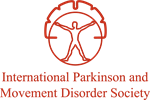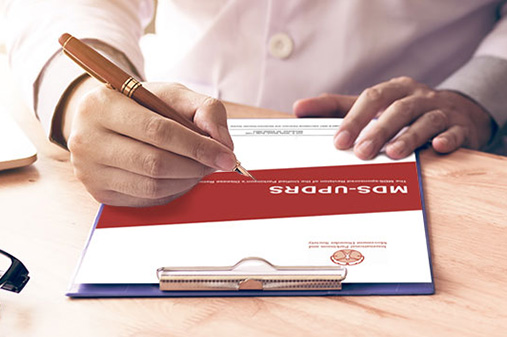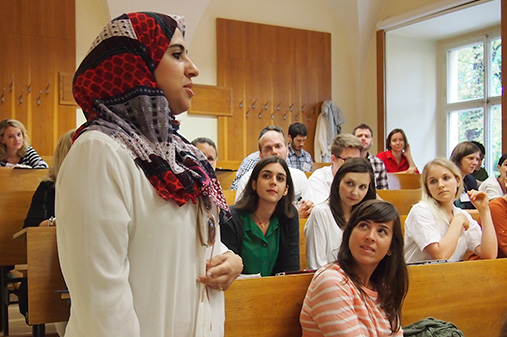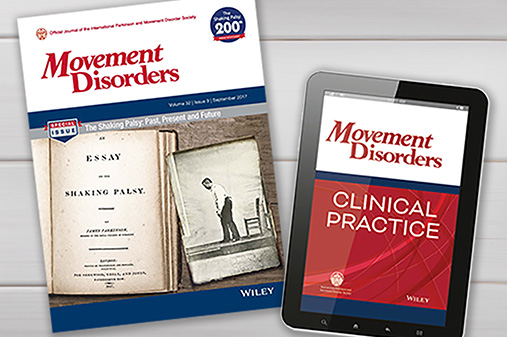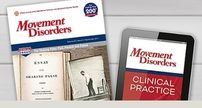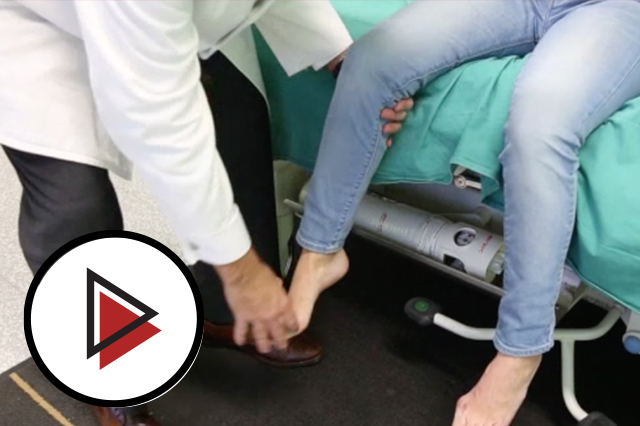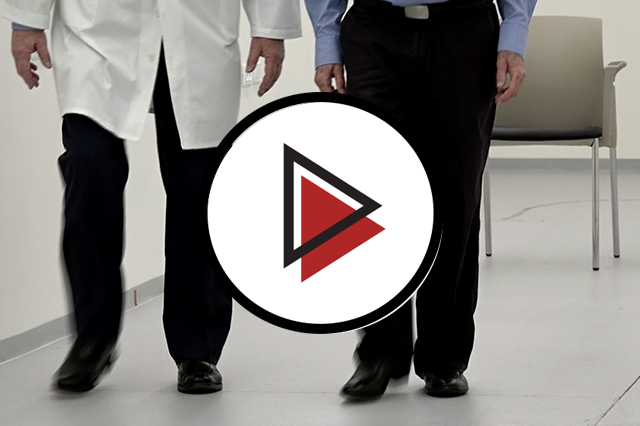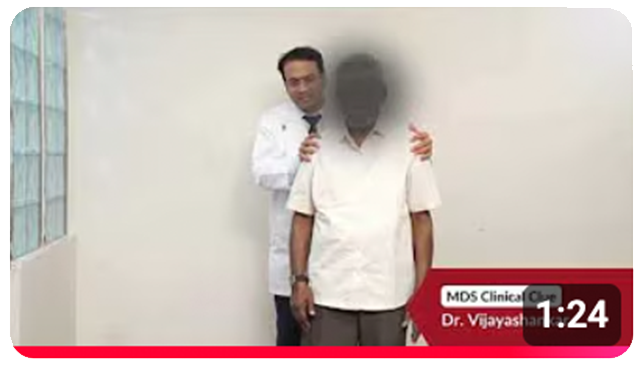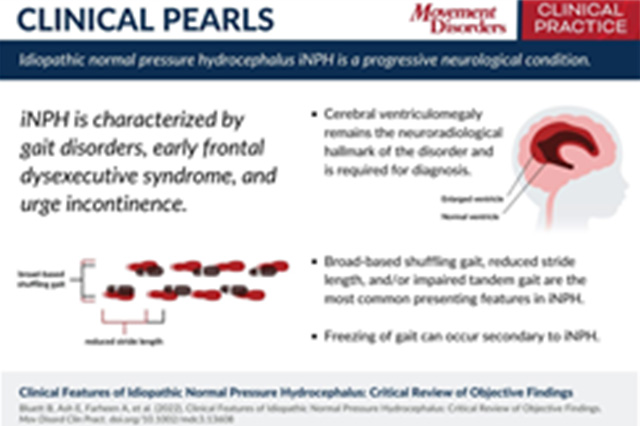
Clinical Resources
Explore the most up-to-date clinical guidelines, tools, courses, and more.
Resources
By Disease
Find clinical resources and information for common movement disorders:
Clinical Tools
Evidence-Based Medicine Reviews
Review the latest recommendations from MDS's Evidence-Based Medicine Reviews, which use a rigorous methodological approach to outline treatment options.
Education
Courses for Clinicians
Browse live, in-person and on-demand courses tailored to clinicial care.
Journal CME 40.12: Effects of a Four-Strain Probiotic on Gut Microbiota, Inflammation, and Symptoms in Parkinson's Disease: A Randomized Clinical Trial
On Demand
60 Minutes
Experienced / Intermediate
1064 <p>The Journal CME 40.12 article aims to evaluate the effects of a probiotic (Lacticaseibacillus rhamnosus, Lactobacillus acidophilus, Lactiplantibacillus plantarum and Enterococcus faecium) on gut microbiota, inflammation, motor and non-motor symptoms (NMS) in PwP and constipation.</p> Etiology & Pathophysiology, Microbiome, Nutritional Therapy, Parkinson Disease/Hypokinetic Movement Disorders, Parkinson's Disease (PD), Therapies-Other Valentina Leta, PhD 60 1.00 https://education.movementdisorders.org/Detail/1064/Journal-CME-40-12:-Effects-of-a-Four-Strain-Probiotic-on-Gut-Microbiota,-Inflammation,-and-Symptoms-in-Parkinson's-Disease:-A-Randomized-Clinical-Trial https://education.movementdisorders.org/Upload/ActivityImages/Journal-CME562837664663.jpg 2025-12-18T00:00:00 2026-12-18T00:00:00 <p><strong>ACCREDITATION STATEMENT</strong></p><p>This activity has been planned and implemented in accordance with the accreditation requirements and policies of the Accreditation Council for Continuing Medical Education (ACCME). The International Parkinson and Movement Disorder Society is accredited by the ACCME to provide continuing medical education for physicians.</p><p><br></p><p><strong>CREDIT DESIGNATION STATEMENT</strong></p><p>The International Parkinson and Movement Disorder Society designates this activity for a maximum of 1 <em>AMA PRA Category 1 Credits™</em>. Physicians should only claim credit commensurate with the extent of their participation.</p><p><br></p><p><strong>FACULTY DISCLOSURE</strong></p><p>All individuals in control of content for this activity are required to disclose all financial relationships with ineligible companies (as defined by the ACCME) over the last 24 months. Disclosure information is available <a href="https://d1t84l7yt030ad.cloudfront.net/FroalaFiles/Journal%20CME%2040.12%20-%20Disclosures_17122025024322.pdf" rel="noopener noreferrer" target="_blank"><u>HERE</u></a>. All relevant financial relationships have been mitigated in advance of this program.</p><p><br></p><p><strong>METHOD OF PARTICIPATION</strong></p><p>Each module will take approximately one (1) hour to complete. Upon reading the article, participants will take a post-test and must receive a grade of 75% or higher to pass. Participants are allowed multiple attempts to complete the post-test. Once the post-test is passed, participants are required to complete the module evaluation.</p><p><br></p><p><strong>SATISFACTORY COMPLETION</strong></p><p>Participants must complete an evaluation for each session they attend to receive continuing medical education credit. Your chosen session(s) must be attended in their entirety. Partial credit for individual sessions is not available.</p><p><br></p><p><strong>CONTENT VALIDITY STATEMENT</strong></p><p>All recommendations involving clinical medicine in MDS activities are based on evidence that is accepted within the profession of medicine as adequate justification for their indications and contraindications in the case of patients. All scientific research referred to, reported or used in CME in support or justification of a patient care recommendations conforms to the generally accepted standards of experimental design, data collection and analysis. Activities that promote recommendations, treatment or manners of practicing medicine not within the definition of CME or are knowing to have risks or dangers that outweigh the benefits or are knowing to be ineffective in the treatment of patients do not constitute valid CME.</p> MDS Education <p><strong>COURSE PURPOSE</strong></p><p>Journal CME highlights various articles covering relevant issues, developments and research topics in the area of movement disorders. Articles are selected from Movement Disorders, the official Journal of the International Parkinson and Movement Disorder Society.</p><p><br></p><p><strong>LEARNING OBJECTIVES</strong></p><p>Upon completion of this activity, learners will be able to:</p><p><span style="color: rgb(0, 0, 0);">1. Understand the role of gut dysbiosis in Parkinson’s disease</span></p><p><span style="color: rgb(0, 0, 0);">2. Assess the impact of a four-strain probiotic on microbiota, inflammation, and symptoms</span></p><p><span style="color: rgb(0, 0, 0);">3. Evaluate the clinical value of probiotics as an adjunct therapy in Parkinson’s disease</span></p><p><br></p><p><strong>INTENDED AUDIENCE</strong></p><p>This activity is intended for clinicians, other health professionals, researchers, policy makers from throughout the world, both MDS members and non-members, who interact with patients living with Movement Disorders.</p><p><br></p><p><strong>HARDWARE AND SOFTWARE REQUIREMENTS</strong></p><p>1. Active Internet connection (DSL or Cable). Dial-up connection will have constant buffering problem.</p><p>2. Compatible with Windows PC and MAC (256 MB of RAM or higher).</p><p>3. Activity is best viewed on Internet Explorer 9.0 or higher, Safari 5.0 or higher and Firefox 29.0 or higher.</p><p>4. Adobe Flash Player 12.0 (or higher).</p><p>5. Adobe Reader to print certificate.</p> 0 /Courses/Journal-CME-40.12-Effects-of-a-Four-Strain-Probiotic-on-Gut-Microbiota-Inflammation-and-Symptoms-in-Parkinsons-Disease-A-Randomized-Clinical-Trial.htm Journal CME 40.12: Effects of a Four-Strain Probiotic on Gut Microbiota, Inflammation, and Symptoms in Parkinson's Disease: A Randomized Clinical Trial Journal CME 40.12 2025-12-18T15:01:04.617 0 0 Experienced / Intermediate On-Demand Etiology & Pathophysiology Parkinson Disease/Hypokinetic Movement Disorders Therapies-Other
Journal CME 40.11: Waveform-Based Analysis of Head Tremor Using a Marker-Less Tracking Algorithm with 2D-Video: Evaluation of Sinusoidality and Rhythmicity
On Demand
60 Minutes
Experienced / Intermediate
1059 <p>The Journal CME 40.11 article aims to introduce a novel video-based waveform analysis to objectively measure two fundamental tremor characteristics—rhythmicity and sinusoidality.</p> Biomarkers, Biomarkers & Diagnostic Tools, Dystonia, Genetics, Hyperkinetic Movement Disorders, Neuroimaging, Neuropathology, Rating Scales, Tremor/Essential Tremor (ET) Jung Hwan Shin, MD, PhD 60 1.00 https://education.movementdisorders.org/Detail/1059/Journal-CME-40-11:-Waveform-Based-Analysis-of-Head-Tremor-Using-a-Marker-Less-Tracking-Algorithm-with-2D-Video:-Evaluation-of-Sinusoidality-and-Rhythmicity https://education.movementdisorders.org/Upload/ActivityImages/Journal-CME562837664663.jpg 2025-11-26T00:00:00 2026-11-26T00:00:00 <p><strong>ACCREDITATION STATEMENT</strong></p><p>This activity has been planned and implemented in accordance with the accreditation requirements and policies of the Accreditation Council for Continuing Medical Education (ACCME). The International Parkinson and Movement Disorder Society is accredited by the ACCME to provide continuing medical education for physicians.</p><p><br></p><p><strong>CREDIT DESIGNATION STATEMENT</strong></p><p>The International Parkinson and Movement Disorder Society designates this activity for a maximum of 1 <em>AMA PRA Category 1 Credits™</em>. Physicians should only claim credit commensurate with the extent of their participation.</p><p><br></p><p><strong>FACULTY DISCLOSURE</strong></p><p>All individuals in control of content for this activity are required to disclose all financial relationships with ineligible companies (as defined by the ACCME) over the last 24 months. Disclosure information is available <a href="https://d1t84l7yt030ad.cloudfront.net/FroalaFiles/Journal%20CME%2040.11%20-%20Disclosures_25112025025555.pdf" rel="noopener noreferrer" target="_blank"><u>HERE</u></a>. All relevant financial relationships have been mitigated in advance of this program.</p><p><br></p><p><strong>METHOD OF PARTICIPATION</strong></p><p>Each module will take approximately one (1) hour to complete. Upon reading the article, participants will take a post-test and must receive a grade of 75% or higher to pass. Participants are allowed multiple attempts to complete the post-test. Once the post-test is passed, participants are required to complete the module evaluation.</p><p><br></p><p><strong>SATISFACTORY COMPLETION</strong></p><p>Participants must complete an evaluation for each session they attend to receive continuing medical education credit. Your chosen session(s) must be attended in their entirety. Partial credit for individual sessions is not available.</p><p><br></p><p><strong>CONTENT VALIDITY STATEMENT</strong></p><p>All recommendations involving clinical medicine in MDS activities are based on evidence that is accepted within the profession of medicine as adequate justification for their indications and contraindications in the case of patients. All scientific research referred to, reported or used in CME in support or justification of a patient care recommendations conforms to the generally accepted standards of experimental design, data collection and analysis. Activities that promote recommendations, treatment or manners of practicing medicine not within the definition of CME or are knowing to have risks or dangers that outweigh the benefits or are knowing to be ineffective in the treatment of patients do not constitute valid CME.</p> MDS Education <p><strong>COURSE PURPOSE</strong></p><p>Journal CME highlights various articles covering relevant issues, developments and research topics in the area of movement disorders. Articles are selected from Movement Disorders, the official Journal of the International Parkinson and Movement Disorder Society.</p><p><br></p><p><strong>LEARNING OBJECTIVES</strong></p><p>Upon completion of this activity, learners will be able to:</p><p>1. Understand the role of rhythmicity and sinusoidality in differentiating tremor types using video-based waveform analysis</p><p>2. Assess the reliability of video-based indices in measuring tremor characteristics by comparing them to gyroscope-based data</p><p>3. Evaluate the effectiveness of video-based analysis in distinguishing between cervical dystonia and essential tremor based on rhythmicity and sinusoidality indices</p><p><br></p><p><strong>INTENDED AUDIENCE</strong></p><p>This activity is intended for clinicians, other health professionals, researchers, policy makers from throughout the world, both MDS members and non-members, who interact with patients living with Movement Disorders.</p><p><br></p><p><strong>HARDWARE AND SOFTWARE REQUIREMENTS</strong></p><p>1. Active Internet connection (DSL or Cable). Dial-up connection will have constant buffering problem.</p><p>2. Compatible with Windows PC and MAC (256 MB of RAM or higher).</p><p>3. Activity is best viewed on Internet Explorer 9.0 or higher, Safari 5.0 or higher and Firefox 29.0 or higher.</p><p>4. Adobe Flash Player 12.0 (or higher).</p><p>5. Adobe Reader to print certificate.</p> 0 /Courses/Journal-CME-40.11-Waveform-Based-Analysis-of-Head-Tremor-Using-a-Marker-Less-Tracking-Algorithm-with-2D-Video-Evaluation-of-Sinusoidality-and-Rhythmicity.htm Journal CME 40.11: Waveform-Based Analysis of Head Tremor Using a Marker-Less Tracking Algorithm with 2D-Video: Evaluation of Sinusoidality and Rhythmicity Journal CME 40.11 2025-11-26T12:01:08.627 0 0 Experienced / Intermediate On-Demand Biomarkers & Diagnostic Tools Hyperkinetic Movement Disorders
MDS Case Presentation: Hyperkinetic Disorder in a 9 Year-Old Boy
On Demand
15 Minutes
Foundational / Beginner
941 This brief 15 minute case presentation will provide the learner with an opportunity to accept the role of a decisive clinician regarding a clinical case of a 9 year-old patient with hyperkinetic disorder. Basal Ganglia, Biomarkers, Biomarkers & Diagnostic Tools, Deep brain stimulation, Dystonia, Etiology & Pathophysiology, Genetics, Hyperkinetic Movement Disorders, Medications for motor symptoms, Medications for non-motor symptoms, Neuroimaging, Neuropathology, Neuropsychiatric symptoms, Non-motor Symptoms/Disorders, Rating Scales, Therapies-Pharmacological, Therapies-Surgical Alia Mansour, PhD 15 0.00 https://education.movementdisorders.org/Detail/941/MDS-Case-Presentation:-Hyperkinetic-Disorder-in-a-9-Year-Old-Boy https://education.movementdisorders.org/Upload/ActivityImages/Case-based-Series866197.jpg 2025-11-18T00:00:00 2028-11-18T00:00:00 MDS Education <p><strong>FACULTY</strong></p><p>Alia Mansour, PhD - Ain Shams University, Cairo, Egypt</p><p><br></p><p><strong>LEARNING OBJECTIVES</strong></p><p>Upon completion of this activity, learners will be able to:</p><p>1. Develop a step-by-step diagnostic approach to a wide spectrum of movement disorders based on clinical history, phenomenology and investigation findings.</p><p><br></p><p><strong>INTENDED AUDIENCE</strong></p><p>This activity is intended for clinicians, other health professionals, researchers, policy makers from throughout the world, both MDS members and non-members, who interact with patients living with Movement Disorders.</p><p><br></p><p><strong>HARDWARE AND SOFTWARE REQUIREMENTS</strong></p><p>1. Active Internet connection (DSL or Cable). Dial-up connection will have constant buffering problem.</p><p>2. Compatible with Windows PC and MAC (256 MB of RAM or higher).</p><p>3. Activity is best viewed on Internet Explorer 9.0 or higher, Safari 5.0 or higher and Firefox 29.0 or higher.</p><p>4. Adobe Flash Player 12.0 (or higher).</p><p>5. Adobe Reader to print certificate.</p> 0 /Courses/MDS-Case-Presentation-Hyperkinetic-Disorder-in-a-9-Year-Old-Boy.htm MDS Case Presentation: Hyperkinetic Disorder in a 9 Year-Old Boy 2025-11-18T09:00:51.450 0 0 Foundational / Beginner On-Demand Biomarkers & Diagnostic Tools Etiology & Pathophysiology Genetics Hyperkinetic Movement Disorders Non-motor Symptoms/Disorders Therapies-Pharmacological Therapies-Surgical
Diagnosis and Management of Motor Symptoms in Early Parkinson's Disease
On Demand
60 Minutes
Foundational / Beginner
1047 <p>This module will explore the clinical diagnostic criteria for Parkinson’s Disease (PD) with emphasis on early stage motor symptoms, as well as exploring atypical presentations and potential differentials. Treatment of early PD motor symptoms will be discussed using the evidence basis for approved therapies.</p> Biomarkers, Biomarkers & Diagnostic Tools, Corticobasal Syndrome (CBS)/Corticobasal Degeneration (CBD), Etiology & Pathophysiology, Genetics, Lewy-body dementia (LBD), Medications for motor symptoms, Multiple Systems Atrophy (MSA), Neuroimaging, Neuropathology, Parkinson Disease/Hypokinetic Movement Disorders, Parkinson's Disease (PD), Progressive Supranuclear Palsy (PSP), Rating Scales, Therapies-Pharmacological 60 1.00 https://education.movementdisorders.org/Detail/1047/Diagnosis-and-Management-of-Motor-Symptoms-in-Early-Parkinson's-Disease https://education.movementdisorders.org/Upload/ActivityImages/05INTERACT-44-001--Motor-Symptoms-in-Early-PD-202x108552477.jpg https://education.movementdisorders.org/Upload/BannerImages/05INTERACT-44-001--Motor-Symptoms-in-Early-PD-734x404583314.jpg 2025-11-06T00:00:00 2028-11-06T00:00:00 <p><strong>ACCREDITATION STATEMENT</strong></p><p>This activity has been planned and implemented in accordance with the accreditation requirements and policies of the Accreditation Council for Continuing Medical Education (ACCME). The International Parkinson and Movement Disorder Society is accredited by the ACCME to provide continuing medical education for physicians.</p><p><br></p><p><strong>CREDIT DESIGNATION STATEMENT</strong></p><p>The International Parkinson and Movement Disorder Society designates this activity for a maximum of 1 <em>AMA PRA Category 1 Credits™</em>. Physicians should only claim credit commensurate with the extent of their participation.</p><p><br></p><p><strong>FACULTY DISCLOSURE</strong></p><p>All individuals in control of content for this activity are required to disclose all financial relationships with ineligible companies (as defined by the ACCME) over the last 24 months. Disclosure information is available <a class="fr-file" href="https://d1t84l7yt030ad.cloudfront.net/FroalaFiles/Disclosures - Early PD_20102025113733.pdf" target="_blank">HERE</a>. All relevant financial relationships have been mitigated in advance of this program.</p><p><br></p><p><strong>SATISFACTORY COMPLETION</strong></p><p>Participants must complete an evaluation for each session they attend to receive continuing medical education credit. Your chosen session(s) must be attended in their entirety. Partial credit for individual sessions is not available.</p><p><br></p><p><strong>METHOD OF PARTICIPATION </strong></p><p>Your chosen sessions must be attended in their entirety. Partial credit of individual sessions is not available. If you are seeking continuing education credit for a specialty not listed in the Accreditation Statement, it is your responsibility to contact your licensing/certification board to determine course eligibility for your board requirement.</p><p><br></p><p><strong>CONTENT VALIDITY STATEMENT</strong></p><p>All recommendations involving clinical medicine in MDS activities are based on evidence that is accepted within the profession of medicine as adequate justification for their indications and contraindications in the case of patients. All scientific research referred to, reported or used in CME in support or justification of a patient care recommendations conforms to the generally accepted standards of experimental design, data collection and analysis. Activities that promote recommendations, treatment or manners of practicing medicine not within the definition of CME or are knowing to have risks or dangers that outweigh the benefits or are knowing to be ineffective in the treatment of patients do not constitute valid CME.</p> MDS Education <p><strong>FACULTY</strong></p><p>Rob de Bie, MD, PhD - Amsterdam University Medical Center, Amsterdam, Netherlands</p><p>Monty Silverdale, MD, PhD - Manchester Centre for Clinical Neurosciences, Salford, United Kingdom</p><p>Ai Huey Tan, MD, PhD, FRCP - University of Malaya, Kuala Lumpur, Malaysia</p><p><br></p><p><strong>LEARNING OBJECTIVES</strong></p><p>Upon completion of this activity, learners will be able to: </p><p>1. Obtain a good clinical history from a patient presenting with parkinsonian features.</p><p>2. Identify typical and atypical features in clinical examination of a patient presenting with parkinsonian features.</p><p>3. Develop a step-by-step approach in making a diagnosis of Parkinson’s disease based on the MDS Clinical Diagnostic Criteria.</p><p>4. Outline a treatment plan for managing motor symptoms in early Parkinson’s disease based on available clinical evidence.</p><p><br></p><p><strong>INTENDED AUDIENCE</strong></p><p>This activity is intended for students, residents, primary care providers, internists, allied health, non-neurology specialists, and industry who have limited to no movement disorder experience.</p><p><br></p><p><strong>HARDWARE AND SOFTWARE REQUIREMENTS</strong></p><p>1. Active Internet connection (DSL or Cable). Dial-up connection will have constant buffering problem.</p><p>2. Compatible with Windows PC and MAC (256 MB of RAM or higher).</p><p>3. Activity is best viewed on Internet Explorer 9.0 or higher, Safari 5.0 or higher and Firefox 29.0 or higher.</p><p>4. Adobe Flash Player 12.0 (or higher).</p><p>5. Adobe Reader to print certificate.</p> 0 /Courses/Diagnosis-and-Management-of-Motor-Symptoms-in-Early-Parkinsons-Disease.htm Diagnosis and Management of Motor Symptoms in Early Parkinson's Disease 2025-11-06T15:01:05.570 0 0 Foundational / Beginner On-Demand Biomarkers & Diagnostic Tools Etiology & Pathophysiology Parkinson Disease/Hypokinetic Movement Disorders Therapies-Pharmacological
Other Educational Resources
Get More Clinical Support
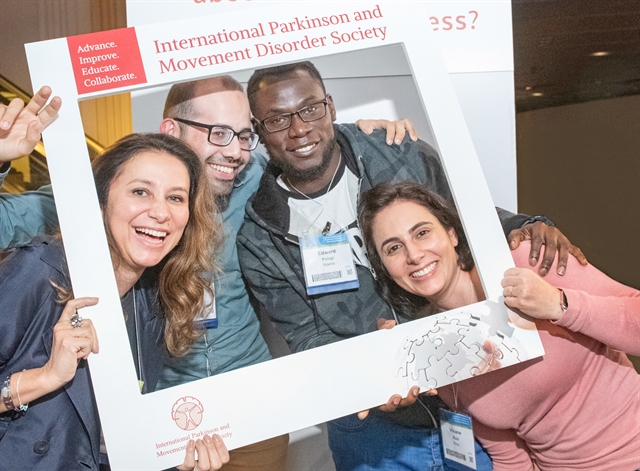
Join MDS
Members gain access to case videos, peer-to-peer collaboration opportunities, discounted education, and a variety of specialized programs.

Attend the International Congress
Discover the latest in the field, and connect with leaders from around the globe.
